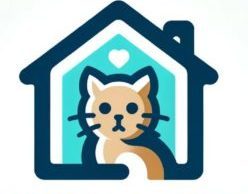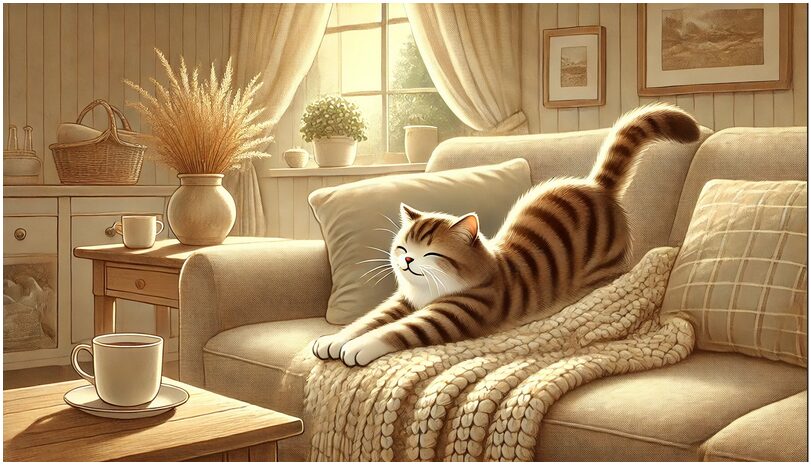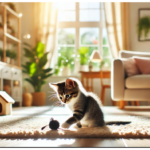Cats have a fascinating range of behaviors, but one of the most endearing (and puzzling) is kneading. Known as “making biscuits” among cat lovers, this rhythmic pressing of paws into soft surfaces can leave even seasoned cat owners scratching their heads. So, why do cats knead? Let’s dive into the theories behind this charming quirk and what it can tell us about your feline friend.
What Is Cat Kneading?
Kneading is the motion cats make when they rhythmically press their paws, one after the other, into a soft surface—often on blankets, pillows, or even their owners. This behavior usually involves alternating paw movements, as if the cat is gently “massaging” the area. Cats may knead with claws extended or retracted, and some even add a little drooling or purring to the mix.
Theories Behind Why Cats Knead
- Instinctual Comfort from KittenhoodThe most widely accepted theory is that kneading is an instinctual behavior leftover from kittenhood. Kittens knead their mother’s belly to stimulate milk flow while nursing, which is a comforting and nurturing experience. Even as adult cats, kneading can bring them back to those early feelings of warmth and security, which may explain why they often do it when they’re feeling relaxed or cozy.
- Marking Territory Cats are known for their territorial nature, and kneading may be one way they claim a particular spot as “theirs.” Cats have scent glands in their paw pads, which release subtle pheromones each time they knead. By pressing their paws into a surface, they could be leaving a scent that marks the area as their territory. This behavior may be more noticeable when your cat kneads a blanket, bed, or even your lap, as they’re likely showing affection while subtly staking their claim.
- Creating a Cozy Nest Another theory ties back to cats’ wild ancestors, who may have kneaded grass and foliage to create a comfortable nest for resting. The act of kneading helps soften and rearrange the area, ensuring it’s both safe and comfortable. Domesticated cats may retain this instinct, especially when preparing to curl up and nap.
- Sign of Relaxation and Contentment Cats often knead when they’re feeling particularly at ease. A cat that is happily kneading on you or a soft surface is likely expressing a high level of comfort and security. This behavior often coincides with purring or settling into a comfortable position, signaling that your cat feels safe and content in their environment.
- Mating Behavior in Female Cats Female cats may knead more frequently during certain times in their reproductive cycle. Kneading, in this case, can be associated with signals of receptivity to mating, although this behavior is typically more subtle. For spayed or neutered cats, this urge may still surface due to residual instincts, even if they’re no longer actively reproducing.
Why Some Cats Knead People
If your cat frequently kneads your lap or another part of your body, congratulations—you’re a part of their inner circle! Cats often reserve this behavior for people they trust, which means kneading is a sign of affection and bonding. When your cat kneads on you, they’re probably doing so because you make them feel safe, much like a kitten with its mother.
How to Handle Cat Kneading (Without Sacrificing Your Furniture)
While kneading is cute, those tiny claws can sometimes be uncomfortable for you or destructive for furniture. Here are some ways to encourage or redirect this behavior:
- Use a Blanket BarrierIf your cat loves to knead on you, consider placing a soft blanket on your lap to cushion the impact. This can protect you from sharp claws without discouraging the kneading behavior.
- Provide a Kneading-Friendly SpotSet up a special area with a soft blanket or pillow where your cat can knead to their heart’s content. Cats are creatures of habit, so having a designated spot for kneading can help protect other surfaces in your home.
- Consider Soft Claws or Nail CapsNail caps, like Soft Claws, are a gentle way to protect your furniture from kneading and scratching without harming your cat’s claws. These caps fit over each claw and prevent sharp claws from damaging furniture or clothing.
- Keep Your Cat’s Nails TrimmedRegularly trimming your cat’s claws can minimize the discomfort of kneading on your skin and reduce the risk of them damaging furniture. Trimmed claws will still allow them to knead comfortably without causing unintended harm.
- Redirect to a Scratching Post or PadSome cats respond well to redirection. By gently moving your cat to a scratching post or designated soft spot when they start kneading, you can reinforce good habits without discouraging the natural behavior.
FAQs About Cat Kneading
Q: Why does my cat only knead on certain surfaces?
A: Cats often have preferences for certain textures or materials when they knead. Soft, cushy surfaces like blankets, pillows, and plush fabrics tend to be favorites, as they offer the perfect “give” for kneading paws. Some cats may also prefer certain scents or places in the house where they feel particularly safe.
Q: Is it normal for my cat to drool while kneading?
A: Yes! Many cats drool while kneading, likely because they associate the activity with feelings of security and contentment. This behavior can be a throwback to kittenhood, where nursing and drooling often went hand-in-hand.
Q: Should I stop my cat from kneading on me?
A: Kneading is a natural, comforting behavior for cats, so there’s no need to stop them. However, if the claws are an issue, try using a blanket or redirecting them to another soft surface. If the kneading becomes painful, using a gentle voice and moving them to a comfortable spot nearby can help.
Final Thoughts: Embrace the Knead
Kneading is one of those feline quirks that may seem strange, but it’s a testament to the unique bond between you and your cat. Whether they’re tapping into kittenhood memories, marking their territory, or simply showing affection, your cat’s kneading behavior is a way of communicating their trust and comfort with you. By understanding and embracing this behavior, you can ensure your cat feels loved and secure while keeping your furniture (and your skin) intact.






